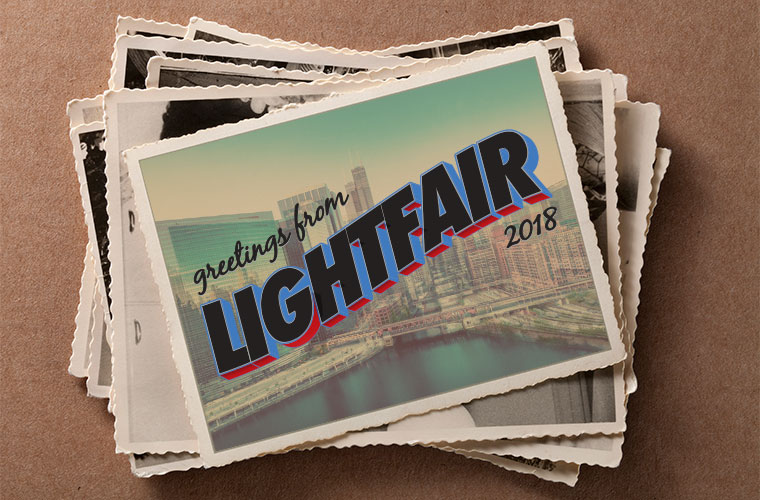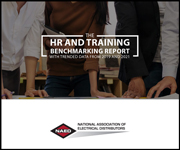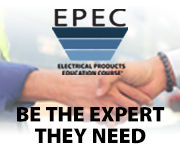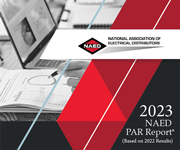Distributors share their impressions of last week’s “Super Bowl” of lighting shows.
From linear LED replacements to architectural designs, niche products, user-friendly controls, and more, LIGHTFAIR 2018, held from May 6-11 at McCormick Place in Chicago, had it all. But if you weren’t among the 20,000+ people who attended LIGHTFAIR (North America’s largest annual lighting trade show), don’t fret. Following, lightED tapped two attendees – Dennis Jessop, lighting product manager for Minneapolis-based Viking Electric Supply (www.vikingelectric.com), and Even Regenstreif, president of Los Angeles-based lighting specialty distributor Regency Lighting (www.regencylighting.com) and Chatsworth, CA-based full-line electrical distributor AllSale Electric (www.allsale.com) – to share their impressions of last week’s show, its highlights and lowlights, and the value that LIGHTFAIR brings to the lighting industry.
tED magazine: What did you think of the physical layout and location of this year’s show?
Jessop: The layout this year was a bit confusing and unclear and there was actually a whole back area of booths that I missed and ended up discovering by accident. But I always love when the show is in Chicago; though it’s nice that it changes up to Philadelphia, San Francisco, etc. in rotating years.
Regenstrief: The mapping/numbering system of booths seemed out of sequence and didn’t align very well, so there were several booths I didn’t make it to. Regarding this year’s location, Regency Lighting has offices across the country and, for us, having the show in Chicago is honestly a bit inconvenient. The audience for the show is distributors, architects, designers, specifiers, etc. and there’s a large community of those individuals in Chicago, but not compared to either the New York/Philadelphia area or LA. I felt that traffic to the show wasn’t as diverse as in the past.
tED magazine: What surprised or impressed you most at this year’s show?
Jessop: I was impressed by the number of manufacturers coming out with user-friendly, app-based controls that address one’s personal use of space. The trend towards building automation systems that are controlled by someone else from somewhere else is gone and it’s become more about making your own environment comfortable. Many manufacturers were offering these systems and I was happy to see that legacy manufacturers like Eaton, Hubbell, and Acuity were keeping up with newer and up-and-coming players in this space.
Regenstrief: I’ve attended the show every year for 15 years and less is surprising me, but I was impressed to see a number of manufacturers offering controls systems that were upgradeable, enabling customers to buy a baseline service and upgrade it over time as their needs and budget allow; manufacturers are creating more entry levels that users can add onto over time so that they don’t have to buy a whole new system. In particular, I thought that Acuity’s Atrius system showed great development of the IoT space and that Philips is offering a very user-friendly and impressive new baseline product. The industry’s decorative and architectural lighting designs continue to impress me and it was also great to see LEDVANCE continue to expand its luminaire line.
tED magazine: What key conclusions did you draw from the show?
Jessop: I saw a lot more higher-output products than before, but it seems that we’ve come to a plateau in fixture development – there weren’t a lot of different fixtures from last year. With the recent explosion of LEDs on the market, I was hoping for more than just the 2X2 and 2X4 structures that are so prevalent in general lighting settings. While LED downlight and flat panel fixtures are thinner now, they’re a thinner version of the traditional fluorescent design and I’m kind of tired of that look. I’d love to see more architectural designs penetrate the general lighting arena.
Regenstrief: I agree – following the initial wave of LED and control products, I’d say that we’re in a ‘refinement’ space now. There were major jumps in technology in past years, but currently we’re not seeing exponential growth in product development or drastic changes in lumen output efficacy; things are just being done better.
tED magazine: What final thoughts would you like to share about LIGHTFAIR and the value it brings to the lighting industry?
Jessop: I appreciate how challenging it is for lighting manufacturers to come up with new products each year and to compete with offshore players. I feel that LIGHTFAIR is definitely worth attending because there’s a lot to see and there’s always something you’ll take away from the experience.
Regenstrief: I think that LIGHTFAIR is the “Super Bowl” of lighting – it’s a time when everyone’s at the same place at the same time. I’ll always attend even though the value of some of the products on display there have lost their potency. In years past, you’d see actual product launches occurring at LIGHTFAIR, but now shows like LEDucation in New York City have become very competitive to LIGHTFAIR. But I think that the value of LIGHTFAIR is in the networking – in an industry where things and people change so fast, it’s a place to reconnect and catch up on where all of your industry colleagues are. The Continuing Education Units (CEUs) are still very valuable for our team and there were lots of sessions on controls at LIGHTFAIR, which was great. And it’s nice to have senior leadership from manufacturers represented at the show and be able to have meetings with those decision makers.
Tagged with 2018, Lightfair





